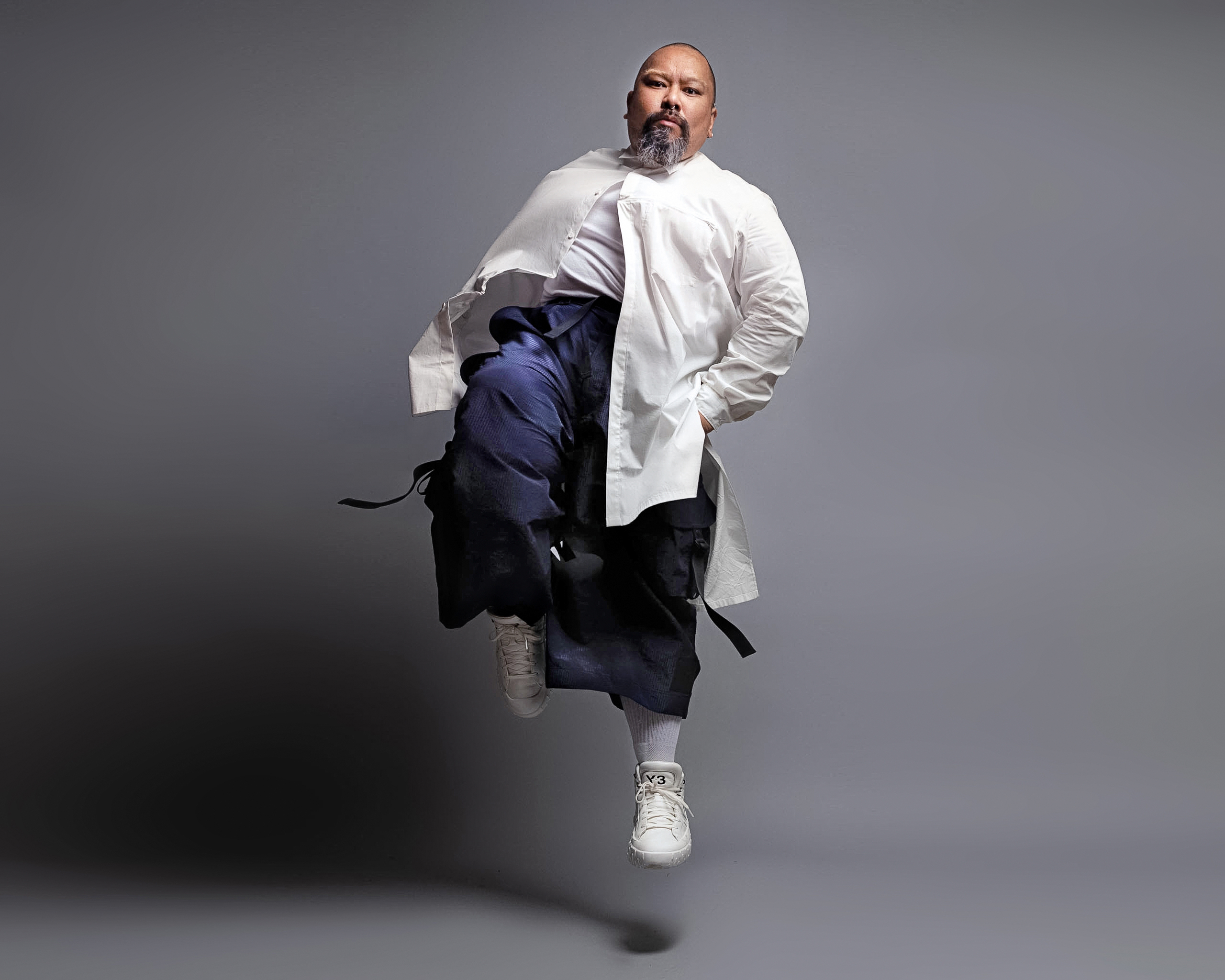
Mike Esperanza is not just a choreographer. He’s a composer, filmmaker, graphic designer, photographer and artist. The thread that ties all his passions together? Music.
Though Esperanza is now a sought-after choreographer, he didn’t take his first dance class until his junior year of college. Back then he was a music major, playing multiple instruments, including trumpet and piano. This extensive musical knowledge now shapes everything he creates, from choreography and dance films to musical scores.
When Esperanza starts a new choreographic work, it’s much more than just setting movement to music. “For me, it’s about creating this world, this fantasy, this architectural movement work that transforms the stage into more of an artwork, rather than just a movement piece,” he explains.
According to him, each dancer plays a role in creating this world. However, for the end result to be clear, the dancers must have a solid understanding of the musicality of the movement and music. “It really helps if you understand the rhythm and the downbeat of the music, or even the syncopation of the group,” he says. “Then, when you contribute to that phrase, you can understand where your specific contribution is beneficial.”
Occasionally, Esperanza composes music for his pieces. Recently in a new work created for Whim W’him Seattle Contemporary Dance, he created the score while choreographing. He admits this process can be disorienting at times, but the method also allows for inspiration to occur at any time, which can completely transform the piece.
In starting a new work, Esperanza says he comes up with a small clip of music to get the ball rolling: “I use that as inspiration for the rest. So as I’m moving along, I know how much to create and how much to move on to the next thing.” During this process, he uses a MIDI player to capture sounds and compose rhythms live in rehearsals, and then later sets the score in GarageBand.
Teaching Musicality in Class
In his drop-in classes, Esperanza typically teaches his combinations in big chunks of choreography. “I like to do nearly half of the combination and then listen to it,” he says. “I think part of learning either musicality or the movement is thinking about it in phrases.”
For most dancers, this might seem like information overload. “You can see the frustration in the beginning. Everybody’s just a little scared, like, ‘Oh, my god, I can’t do this,’ ” Esperanza jokes. “I always tell them, ‘Sit back, listen to the music first, get familiar with it and then start moving.’ ”
More so, according to Esperanza, these long movement phrases force the dancer to think about their relationship to the music and vice versa: “Sometimes music is one thing and then the movement is another, and they can live separately. But in movement or musical phrasing, they have to live together.”
When guiding dancers through the phrases, Esperanza focuses on weight shifts: “I like to think about how the movement starts and how it progresses because a lot of it is just weight shifts. If you’re thinking about it singularly as a weight shift, you get stuck there rather than thinking about the movement as a rebounding element.”
Sometimes for the class combination, Esperanza uses an atmospheric sound score instead of a song with a specific rhythm. This can be a challenge for dancers: How do you phrase something without having rhythm in the background?
“If you can figure out how to add rhythm to the body without having to rely on the music, then that’s also teaching the specifics of where the downbeat or the syncopation happens,” says Esperanza. “Moreover, if you can teach [students] how to listen to rhythm in class and if you take that specific lesson to rehearsals or any other thing that you’re doing, you help [them] find a rhythm in the phrasing itself.”
Finding new music for class can seem overwhelming at times. In addition to going down “recommended song” rabbit holes on Apple Music or Spotify, Esperanza uses SoundCloud. “SoundCloud is a great resource for certain things because a lot of DJs post their iteration of a song there. Sometimes I prefer a different iteration of some songs just because it’s more interesting,” says Esperanza.
For a look into what music has been inspiring him lately, check out the Spotify playlist he put together.
“My Friend the Forest,” by Nils Frahm
“This song embodies love, sexiness and heartache all at once. The first time I heard it, it took me to so many memories, relationships, conversations and life experiences. It’s like an old friend that always gives you a warm hug. Definitely one of my favorites of all time.”
“Lullaby for My Insomniac,” by James Blake
“This song audibly illustrated my thought process whether I’m home, traveling, or just out and about in the city. The pulsating melodic chord progression helps me slow down after a long day. It kind of simplifies me in some sort of way.”
“That’s the Way Love Goes,” by Janet Jackson
“I’m a huge Janet fan and this song is like a lifetime mood. This album has a distinct memory because it was the first album I waited in line [for] at Tower Records, to get the double-CD folio set. When I lived in California, I would drive the coast with this song playing.”
“Merry Christmas Mr. Lawrence,” by Ryuichi Sakamoto
“Also one of my all-time favorites. I’ve followed Ryuichi Sakamoto for a long time. The way piano and strings are used in this composition illustrates such a vivid picture. Delicate, bright and moving.”





